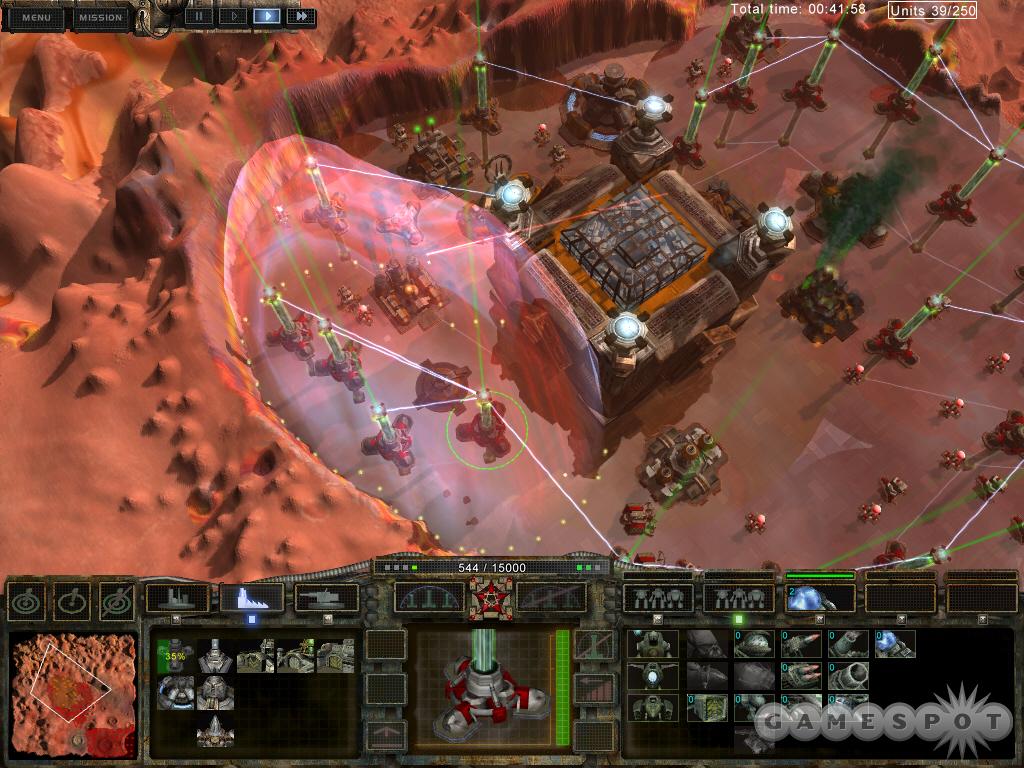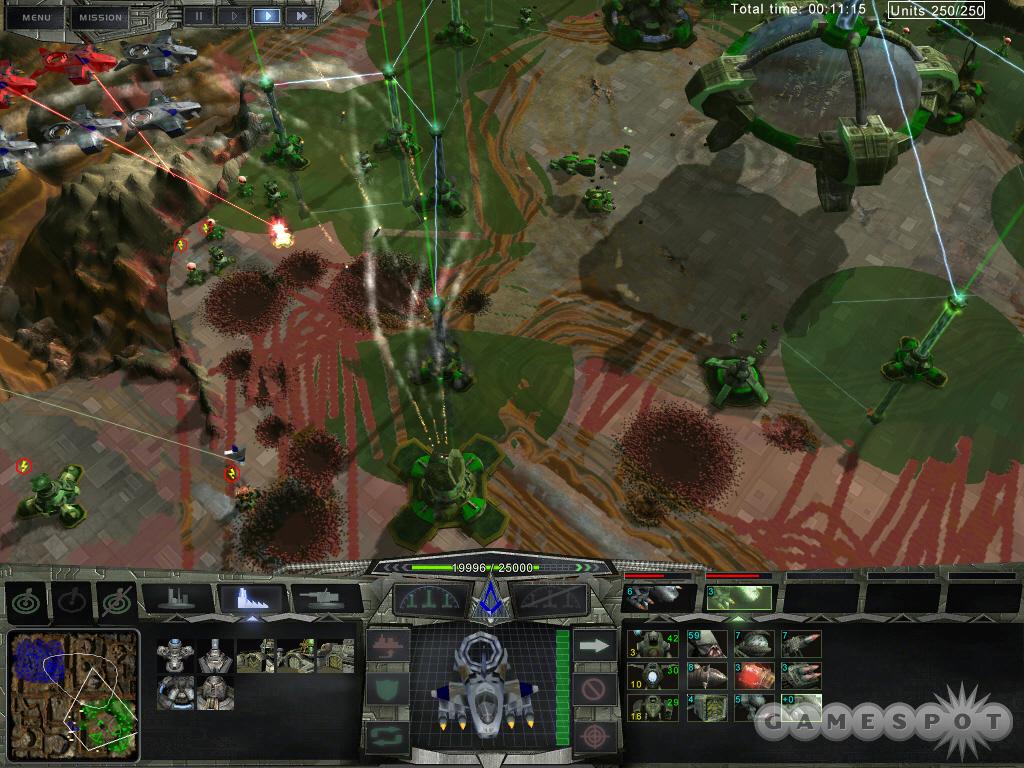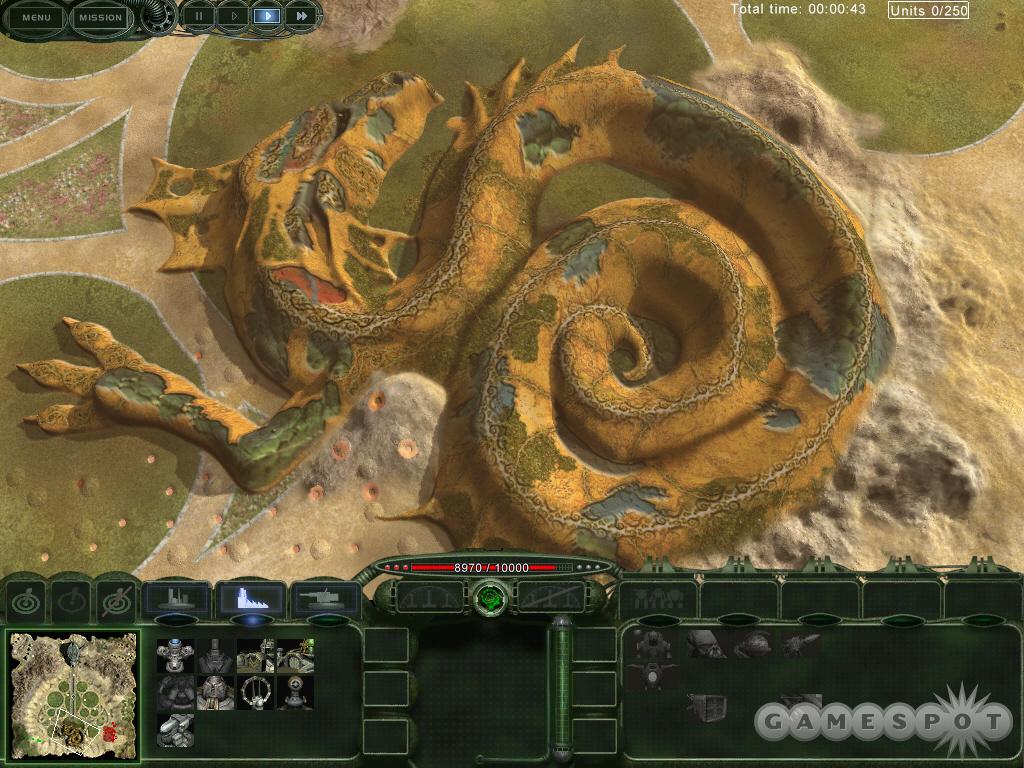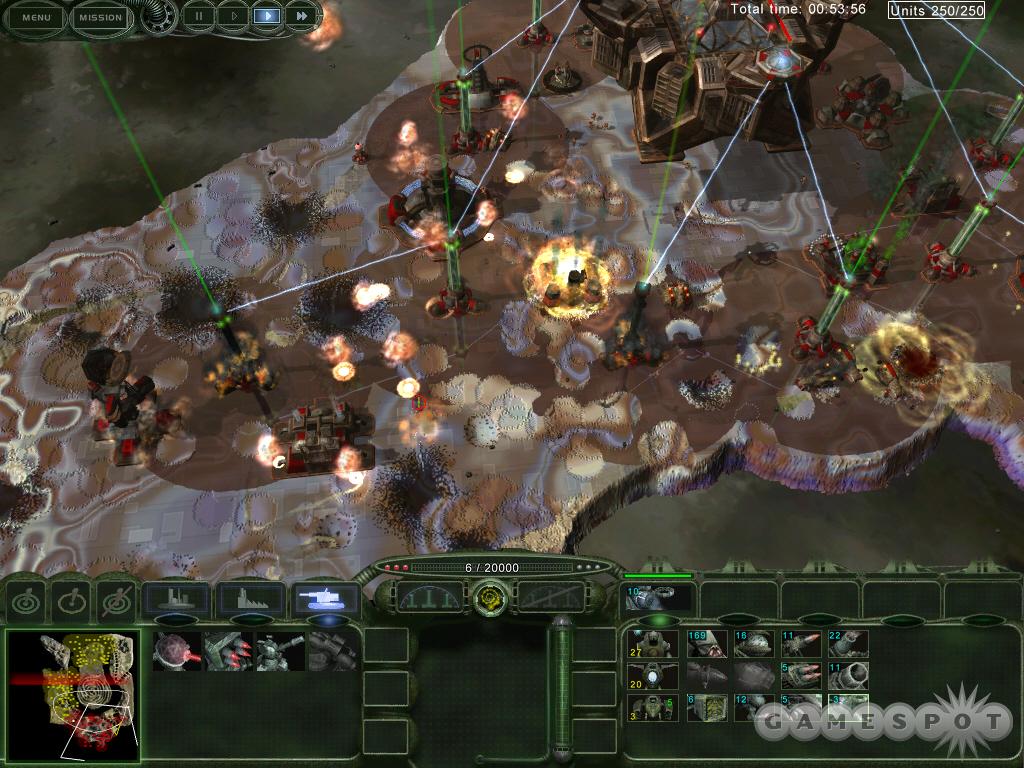Innovation is a word that gets bandied about a lot but is rarely seen, especially in the realm of real-time strategy games. But every now and then, someone delivers a game that's completely unlike anything seen before. Perimeter is just such a game. This real-time strategy game from Russian developer 1C delivers a high-concept sci-fi setting, a load of innovative gameplay, and beautiful graphics. And though it falls short in a few areas, it's still a breath of fresh air in a genre in need of it. 
To understand Perimeter, you have to understand the game's plot, which, we admit, is a bit bewildering. In the distant future, humanity is forced to travel to a new world through a series of different dimensions. In addition to battling rival factions trying to get to the end destination first, humanity also encounters the scourge, a strange, hostile life-form that inhabits the dimensional worlds and one whose shape is determined by human thought; it can be a dragon, a swarm of ants or other insects, and more. When humanity arrives in a new dimension in its "frame," which is like a huge floating city, it has to establish a base to charge up the dimensional gate and to power all of the defenses needed to protect the frame from attack. (These defenses include the perimeter, a powerful shield that can repulse any attack, but one that draws more power than can be generated, so it can only operate for limited periods of time.) And in order to construct power cores and other structures, the terrain must be terraformed into a smooth surface, which is why Perimeter could be considered a real-time terraforming strategy game; you dispatch droids to level mountains and hills and fill in canyons to create a flat surface. Part of the strategy is trying to figure out how to maximize the amount of land at your disposal in order to extend your chain of power cores to either reach an important objective first or encircle your opponent. It's a completely different dynamic from most real-time strategy games because land--for all intents and purposes--is the primary resource. In order to construct an effective base, you need to construct a network of energy cores (which also serve as the "fence posts" for the perimeter shield), research labs, factories, and stationary defenses, including lasers, rocket pods, howitzers, and subterranean guns that can knock out tunneling enemies. The more you build up, the more power you'll require, which means you have to build a larger base that's tougher to defend. On the flip side, you can also target the weak spot in an enemy's energy network to bring down seemingly insurmountable defenses.

Perimeter isn't just about base-building. When you go on offense, you have access to a powerful and unique unit system based on nanotechnology. There are three basic kinds of robotic units in the game: soldiers, officers, and technicians. Individually, these units aren't very powerful, but if you have the technology and the appropriate numbers of each unit, you can meld them together and transform them into something much more powerful, like a mobile rocket launcher, tank, or aircraft. You can even turn them into burrowers that can tunnel beneath an enemy base, disrupting the smooth surface and causing damage to the buildings. This reduces the need to build a gigantic army consisting of a half-dozen unit types, as you can just build one group that can transform to any need. And there's a traditional rock-paper-scissors relationship between the various units, so you have to constantly transform your units on the fly to adapt to enemy tactics.
There's a wide variety of missions in the game that ensure you'll be doing something slightly different each time. In one mission, you have to capture an enemy frame by cutting it off from its own energy network, while in another mission you have to wipe out scourge nests spread out across the map. You're given Starcraft-style mission briefings prior to each level, and this is where the game gets confusing, as the campaign seems to jump from faction to faction haphazardly with little sense of continuity or plot. In one mission you're playing one faction, and then it's an entirely different faction in the next mission. In a way, the game's stylized dialogue is too stylized for its own good, and it's hard to keep up with what's going on.

Perimeter is also hampered by some lackluster artificial intelligence; the scourge is a pretty mindless enemy that spawns the same units at you over and over again. On the other hand, the AI for enemy factions is pretty good at identifying the weak spots in your defenses and concentrating on them. Then again, once you figure out the formula for efficient base-building, it's pretty easy to fend off the enemy's assaults. In fact, most of the challenge in the game comes from figuring out what tactics the level designers want you to adopt on each level and then proceeding from there, so it feels like you're jumping through hoops at times. Trying to finish off a computer opponent can be a frustrating experience, as the computer can raise its perimeter shield in short spurts over and over again, just long enough to repair any damage that you've inflicted on the base. This can make the mission drag on in a prolonged game of attrition, but it's one you've got to wait out in order to advance.
At least the action looks gorgeous while you're waiting. Something needs to be said for the game's graphics, which use a cutting-edge mix of polygons and voxels (pixel-like elements). The terrain of each world looks absolutely unique, thanks to the "crumbly" nature of the voxels, and each level looks completely different from the next. There are lots of impressive, little effects, such as the transformation of the surrounding area into a shining, mirrored surface when you build an energy core. However, all this graphical beauty comes at an extreme price. The developers boast that the engine can push a million polygons per frame, and this, combined with the voxels, requires a lot of processing power. On a 3GHz machine, the frame rate can drop into the single digits whenever there is a medium-sized amount of action on the screen. Perimeter is a game that will push the most powerful systems to their limit and beyond. And though you can't tweak the detail settings, the game does offer settings to sacrifice eye candy for performance.
On the sound front, Perimeter's sound effects are standard for the genre; laser beams sound like what you'd expect, and rockets have the familiar whoosh to them. Since your units are robotic in nature, there's none of the idle banter you find in most real-time strategy games, so there's not much sense of personality. More often than not, the most prominent sound in the game is the background music, which, while good, isn't memorable.

Perimeter has some notable shortcomings, but it's definitely worth checking out if you're a fan of real-time strategy. The developers deserve a lot of credit for daring to be different, and Perimeter is without a doubt one of the most innovative real-time strategy games to appear in years.